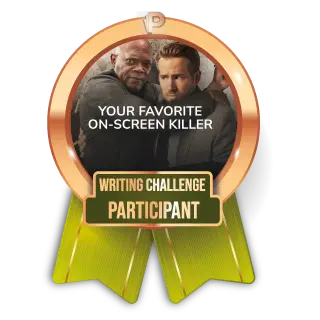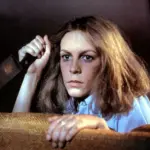No matter your age group, you likely use emojis when texting. Maybe you don’t use them frequently, but they're a good way to quickly convey emotion and communicate feelings. I started using emojis as soon as I got my first phone privileges. I use them to enhance the tone of my texts because, in today’s world, texting is a sincere form of communication, and how you do it matters. A period at the end of a sentence can make you seem annoyed or angry, but adding an emoji can soften the blow. We’ve been conditioned to accept these unspoken rules.
As I get older, I find myself struggling to keep up with the evolving emoji culture of younger generations. The youth of today are constantly developing new ways to communicate, and we may not fully understand them. However, I grew up in a cultural wave of cruel, targeted, online behaviour, so I’m all too familiar with the negative impact digital communication can have. Adolescence is the new 2025 hit thriller mini-series that explores this phenomenon incredibly.

The first episode of Adolescence follows the police breaking into 13-year-old Jamie Miller’s house and arresting him for the murder of his classmate, Katie. His parents are in denial until tangible proof is revealed to his father, shifting the focus of the case to why Jamie committed the crime. A large portion of the episode details the tedious procedures of entering the criminal justice system—the questioning, the fingerprinting, and the endless walks up and down hallways to various rooms.
Yet, despite this slow pace, the viewer remains hooked, invested in Jamie’s fate after his arrest. The series primarily focuses on Jamie's psyche and why people like him commit these crimes, but my analysis will focus on the second episode, particularly the relationship between law enforcement and the students at Jamie’s school, and how they gather evidence.

Detective Bascombe, one of the lead investigators, asks his son Adam if he knows anything about the case. Their relationship is strained—Adam is reluctant to engage because his father often dismisses him. Bascombe bombards Adam with questions about how teenagers today communicate digitally. Frustrated but eventually willing to help, Adam shows his father an Instagram page where Jamie is the target of bullying by a group of girls, including Katie. In this scene, Adam deciphers the coded meaning behind various emojis and slang terms and translates for his father, offering insight into how today’s youth perceive and are affected by digital interactions.
As a viewer, I found this moment striking. While I recognized some of the emojis from my teenage years, others were completely foreign to me. I only understood their meaning after researching them. Based on the messages on Instagram, Adam believes that Katie was accusing Jamie of being an incel—a term linked to online misogynistic communities that bond over shared rejection by women.
Bascombe is stunned and questions how someone can be an “involuntary celibate” at 13. Adam explains, “She’s saying he always will be. That’s what they mean when they call someone an incel. They’re saying he’s going to be a virgin forever.” He points out that other users in the comments agreed with Katie. Adam further explains that among his classmates, it’s common to say that 80% of women are attracted to only 20% of men. They use the red bean emoji to convey this idea, along with the 100% emoji, which is meant to reference statistics about women.

However, this isn’t the only way students at Jamie’s school communicate. Just looking at emojis on a surface level can lead to misinterpretation depending on generational differences and cultural context. For example, while you might assume that a heart emoji just means love, in emoji slang, each different colour has its own hidden meaning. As Adam explains to his father: “Red means love, purple means horny, yellow means ‘I’m interested, are you interested?’, pink means ‘I’m interested but not in sex’, orange means ‘you’re going to be fine’—everything has a meaning.”
That’s just the interpretation in Adolescence, though. There are many variations online, most commonly:
• A red heart represents classic love or romantic feelings.
• An orange heart is used for warmth, enthusiasm, or platonic love.
• A blue heart is used more for friendship or to say something is cute.
• A black heart, rather than symbolizing dark emotions, is often used aesthetically as an alternative to the red heart.

Emojis have seemingly taken over how we express emotions online. No matter how trivial it may seem to people older than Gen Alpha (myself included), they are an essential part of how we communicate in a world that increasingly relies on digital interaction. Detective Bascombe leaves the school baffled, recontextualizing everything he knows about human connection. He tries to avoid being critical but can’t help feeling defeated for not noticing these shifts in communication earlier.
This scene isn’t meant to tell parents to go running to their kids’ phones, decoding every emoji and interrogating them about why they used the droplets emoji on their crush’s post. Instead, Adolescence highlights the evolving nature of digital language and its growing influence on human interaction. The show also explores the idea that children aren’t raised solely by their parents. Their friend circles and online communities play a massive role in shaping their self-confidence and their understanding of human connection.

I remember cyberbullying becoming a huge issue when I was in middle school. The anonymity of the internet made people feel like they could say anything, no matter how cruel or absurd. It was all “fair game” because there were no real-world consequences. That was until people realized how many young kids were taking their own lives after receiving relentless hurtful comments at an age when self-worth is fragile and still developing. Episode 2 captures this dynamic well. The two police officers struggle to control rowdy, pubescent middle schoolers and witness firsthand how cruel they can be—not just face-to-face, but now in a completely embedded digital space where boundaries no longer exist.

Kids can be evil, but sometimes they’re just brats. If you're a sensitive soul, it’s probably better to stay offline. But that’s not a real solution—just a Band-Aid over a stab wound. What stood out to me about Adolescence was how it portrayed online communication fluidly. In many adult-focused depictions, these topics are often approached with a tone of condemnation, shaming teenagers for their “internet illiteracy” and implying that it’s fueling their brains with useless or harmful ideas.
But Adolescence takes a more nuanced and respectful approach. Rather than demonizing emoji culture or teenage slang, it highlights the generational disconnect. Bascombe doesn’t just feel out of touch—he feels regretful and isolated from his son’s world. As he deciphers more messages, he begins to suspect that Adam might also be bullied at school. When he tries to ask him about it, Adam quickly dismisses the concern.

Ensuring a child has a safe online community is important for any parent. But what this show suggests is that trying to control their digital world isn’t the solution. Instead, the key is to take the time to understand their generation and help them navigate it in a healthy, informed way.
Adolescence tells us that even though these teenagers all participate in the same online community, their actions and perspectives couldn’t be more different. It takes a village to raise a child, but in Adolescence's case, it takes an entire digital platform, coded emoji symbols, and a close-knit friend circle, to raise a killer.





















































View replies 2
View replies 1
View replies 1
View replies 1
View replies 1
View replies 1
View replies 1
View replies 0
View replies 0
View replies 0
See collapsed comments